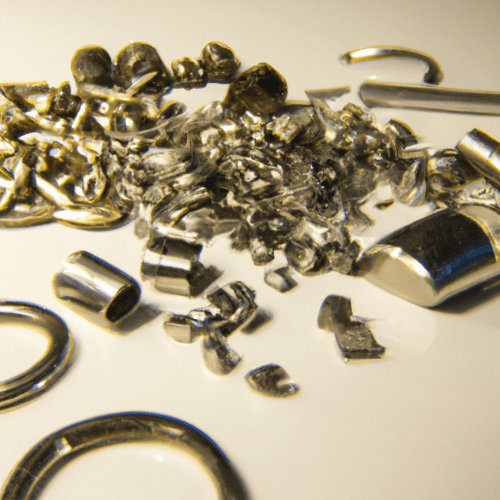Metals are a class of elements that are characterized by their malleability, ductility, and electrical and thermal conductivity. Metals are generally shiny, opaque, and good conductors of heat and electricity. They are also generally malleable, meaning they can be hammered or pressed into different shapes without breaking. The most common metals are iron, aluminum, copper, lead, zinc, nickel, tin, and gold. Other metals include silver, cobalt, chromium, magnesium, and titanium. Metals are found in nature in the form of ores, which are rocks containing metal compounds. These compounds must be extracted from the ore in order to obtain the metal. Metals are also found in alloys, which are combinations of two or more metals. Alloys are often stronger and more durable than pure metals. Metals are used in a variety of applications, including construction, manufacturing, electronics, and jewelry.
What are the 20 elements of metal?
The 20 elements of metal are as follows:
1. Hydrogen (H)
2. Helium (He)
3. Lithium (Li)
4. Beryllium (Be)
5. Boron (B)
6. Carbon (C)
7. Nitrogen (N)
8. Oxygen (O)
9. Fluorine (F)
10. Neon (Ne)
11. Sodium (Na)
12. Magnesium (Mg)
13. Aluminum (Al)
14. Silicon (Si)
15. Phosphorus (P)
16. Sulfur (S)
17. Chlorine (Cl)
18. Argon (Ar)
19. Potassium (K)
20. Calcium (Ca)
Which element is metal in periodic table?
The periodic table is a chart that organizes all of the known elements according to their atomic number, electron configuration, and chemical properties. Of the 118 elements currently known, 92 are metals. These include the alkali metals, alkaline earth metals, transition metals, lanthanides, and actinides. The alkali metals are the elements in Group 1 of the periodic table, which include lithium (Li), sodium (Na), potassium (K), rubidium (Rb), cesium (Cs), and francium (Fr). The alkaline earth metals are the elements in Group 2 of the periodic table, which include beryllium (Be), magnesium (Mg), calcium (Ca), strontium (Sr), barium (Ba), and radium (Ra). The transition metals are the elements in Groups 3-12 of the periodic table, which include scandium (Sc), titanium (Ti), vanadium (V), chromium (Cr), manganese (Mn), iron (Fe), cobalt (Co), nickel (Ni).
Are all metals elements?
Yes, all metals are elements. An element is a substance that cannot be broken down into simpler substances by chemical means. Metals are elements that are characterized by their ability to conduct electricity and heat, and their malleability and ductility. Examples of metals include iron, aluminum, copper, gold, silver, and lead. All of these elements are found on the periodic table, which is a chart that organizes all of the known elements according to their atomic number, electron configuration, and chemical properties. Metals are generally found in the left-hand side of the periodic table, and are characterized by their metallic luster and high melting and boiling points.
Which of the first 30 elements are metals?
The first 30 elements on the periodic table are hydrogen (H), helium (He), lithium (Li), beryllium (Be), boron (B), carbon (C), nitrogen (N), oxygen (O), fluorine (F), neon (Ne), sodium (Na), magnesium (Mg), aluminum (Al), silicon (Si), phosphorus (P), sulfur (S), chlorine (Cl), argon (Ar), potassium (K), calcium (Ca), scandium (Sc), titanium (Ti), vanadium (V), chromium (Cr), manganese (Mn), iron (Fe), cobalt (Co), nickel (Ni), copper (Cu), zinc (Zn), gallium (Ga), and germanium (Ge). Of these, the elements that are metals are lithium (Li), sodium (Na), magnesium (Mg), aluminum (Al), potassium (K), calcium (Ca), scandium (Sc), titanium (Ti), vanadium (V), chromium (Cr), manganese (Mn), iron (Fe).
How many metals are there?
Metals are a class of elements that are characterized by their malleability, ductility, and electrical and thermal conductivity. They are also characterized by their luster and the ability to be formed into thin sheets. Metals are divided into two categories: ferrous and non-ferrous. Ferrous metals contain iron and are magnetic, while non-ferrous metals do not contain iron and are not magnetic.
The number of metals is not fixed, as new elements are constantly being discovered and added to the periodic table. As of 2021, there are 118 known elements, of which 80 are metals. Of these 80 metals, 26 are transition metals, 10 are lanthanides, 14 are actinides, and 30 are other metals. The other metals include alkali metals, alkaline earth metals, post-transition metals, and metalloids.
Metals can also be classified according to their properties. For example, some metals are ductile, meaning they can be drawn into thin wires, while others are malleable, meaning they can be hammered into thin sheets.
What are the 20 most common elements?
The 20 most common elements are hydrogen, helium, oxygen, carbon, neon, nitrogen, magnesium, silicon, sulfur, iron, calcium, aluminum, sodium, potassium, chlorine, phosphorus, argon, zinc, copper, and lead. Hydrogen is the most abundant element in the universe, making up about 75% of all matter. It is also the lightest element, with an atomic weight of 1. Helium is the second most abundant element, making up about 24% of all matter. It is also the second lightest element, with an atomic weight of 4. Oxygen is the third most abundant element, making up about 21% of all matter. It is also the third lightest element, with an atomic weight of 16. Carbon is the fourth most abundant element, making up about 18% of all matter. It is also the fourth lightest element, with an atomic weight of 12. Neon is the fifth most abundant element, making up about 9% of all matter. It is also the fifth lightest element, with an atomic weight of 20.
